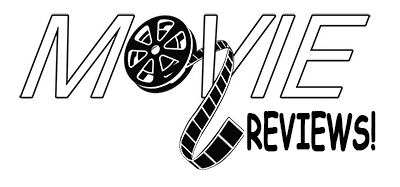 🍿🍿🍿🍿🍿🍿🍿🍿 | 🎙️ EPISODE 546: 09.02.22 𝐏𝐚𝐫𝐭 𝐨𝐟 𝐭𝐡𝐞 𝟏𝟎-𝐕𝐨𝐥𝐮𝐦𝐞 RANKING GREENAWAY 𝐒𝐞𝐫𝐢𝐞𝐬 This is a joint review for The Pillow Book and 8½ Women. I'm not sure if these two films are a return to form, but they are certainly the strongest entries since the unmatchable heyday of 1980s Greenaway. They're also distinctly a pair, not so much visually (Pillow continues the "editing is everything" style of the recent work with endless overlays, picture-within-picture and other post-production effects/affects) but, thematically, they seem very much linked. That 8½ plays it so straight and masterfully visually, and finally moves the camera outside again (to get some brilliantly lit scenes from cinematographer Sacha Vierny) is why I liked it just a tiny bit more. |
Knowing what I know of and about the visual style and content of the massive, multimedia project that would follow it (The Tulse Luper Suitcases, released 2003-2005), 8½ Women is all the more intriguing to me. Perhaps it is the last film of Greenaway's to be presented in this fashion? If so, its general absurdism and, more to the point, its testing the limits of good taste are all the more fascinating. Perhaps the response it garnered (generally awful) steered Greenaway away from these "true original" type stories? Easily lost in the shuffle is some pretty trenchant commentary on the negativity of deranged male hedonism and the role in which the patriarchy dictates both sexual behavior and social mores. Like with earlier works, there's too much beyond this (the racial stuff is beyond unnecessary) but it wouldn't be a Peter Greenaway film if didn't try to include the kitchen sink of symbolism, now would it? 8½ gets to such a frantic pace by its conclusion that its main characters seem barely cognizant of what's happening or supposed to be happening. But it doesn't really matter because it's just so brilliant to look at and it *feels* so smart. The toast burning scene? The fantastic callback to The Belly of an Architect's keyhole voyeurism scene? It's fully reliant on these moments because these moments are perfect and the aforementioned issues/qualms are undeniable, though forgivable. And lastly, it's main device: the deaths of these 8½ women... What a wonderful juxtaposition and reversal of the main device of his what is likely his best movie, Drowning by Numbers.
Where 8½ tries to be smart by keeping it almost entirely silly, The Pillow Book tries to be smart by being mostly serious, even if it also feels unbearably out there. As he has done previously, and will do a great deal more of in the future, a good chunk of this is based on historical fact, namely the ACTUAL Pillow Book, by Japanese author and poet Sei Shōnagon, completed in the year 1002, as well as the real, global tradition of body painting. While these two things aren't naturally related, their pairing here, at least in the eyes of an outsider, doesn't feel forced. Visually, the film is perhaps most reminiscent of Prospero's Books and A TV Dante, minus the talking documentary inserts. It isn't nearly the history lesson, of course, but it functions as a history of our (fictional) main character in much the same way. Nagiko, played by Vivian Wu, is as singularly deep and focused a main character as Greenaway has ever produced (Anthony Higgins as The Draughtsman and Brian Dennehy as The Architect come to mind as the only comparisons in what has mainly been a series of ensemble pieces, and the role of The Author/The Artist Wu inhabits in this is a fitting continuation of that model). One of the most intriguing themes of The Pillow Book revolves around the idea of "The Gatekeeper" in the arts, those who control who gets to see the things you make (in this case, the publisher character). I'm sure it's a concept an iconoclast like Greenaway is well versed in. But the film is overall cagey and mysterious; its concepts are not overt. Maybe too much of this movie exists in the post production editing room to stoke full-on narrative engagement, but it feels more personal than the largely historical and theatrical entries which preceded it. There's callbacks galore of course, a staple, from scatalogical chitchat to extreme body horror and mutilation, echoes of both The Cook... and The Baby....
The things that both of these films do well never quite reach the heights of the six best Greenaway films, but what they do do is show the audience that The Master still has it; only whatever that is has dramatically morphed over time and/or been segregated to moments, apart from something else which he feels the need to get off his chest now. Better vs. Worse is perhaps debatable, but Different surely is not. The true masters of this form never stay the course, and in doing so, they reveal just how difficult the path, be it to continued success or critical adoration, truly is.
CHRONOLOGICALLY
⫷ EPISODE 545 - (YOU ARE HERE) - EPISODE 546B ⫸
⫷ EPISODE 545 - (YOU ARE HERE) - EPISODE 546B ⫸
The Pillow Book is a 1996 erotic drama film written and directed by Peter Greenaway, which stars Vivian Wu as Nagiko, a Japanese model in search of pleasure and new cultural experience from various lovers. The film is a melding of dark modern drama with idealised Chinese and Japanese cultural themes and settings, and centres on body painting. It was released on May 12, 1996.

0 comments:
Post a Comment